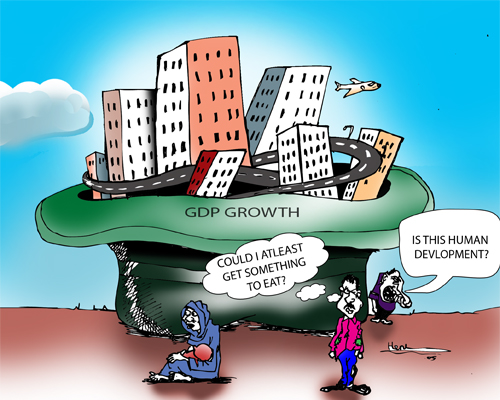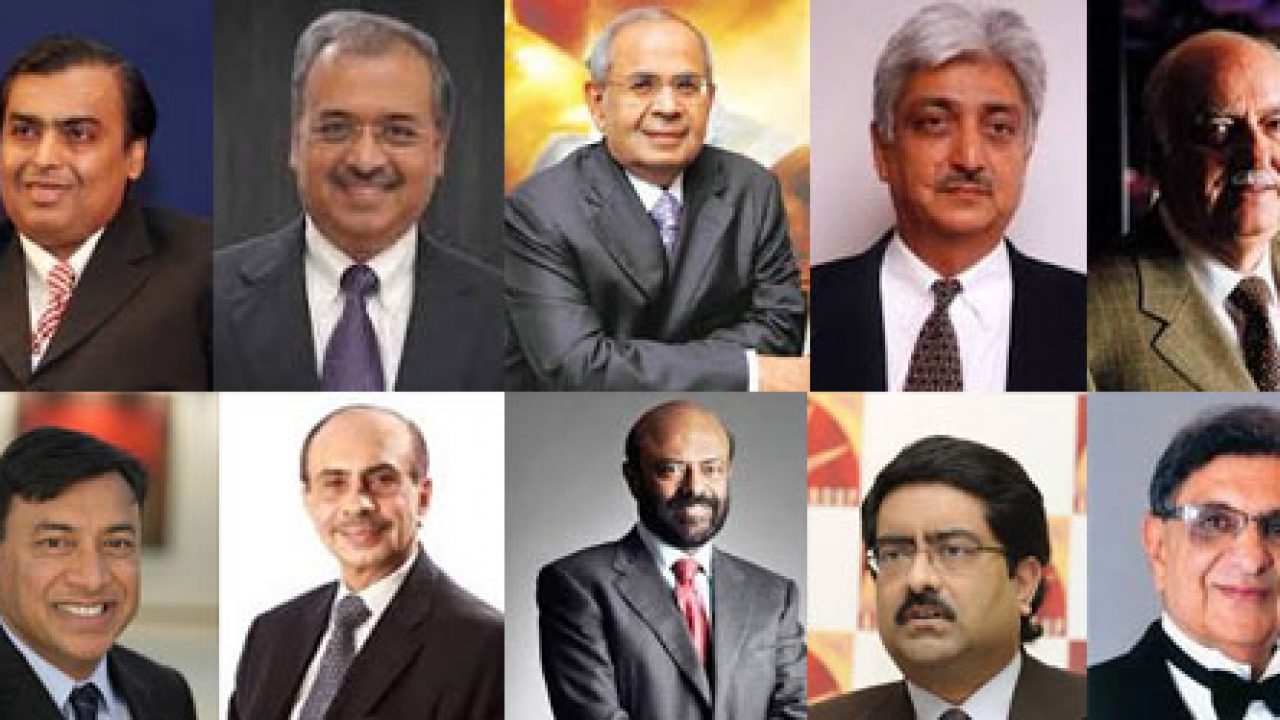GNP: Can Gross National Product be an adequate measure of human development? – being on the list of 45 poorest countries

GNP: Economic growth and development have always been confused with one another, and this intrinsically ignores a very important dynamic of development. While we explicitly mentioned development as the long term growth, we do not make an effort to differentiate with the short-term targets that have been put in place for the analysis. Economists with hard-noses for per capita gross national product often restrain the conversation to the topic of economic growth that development gets lost in the middle.
India stands on the list of the 45 poorest countries in the world, as described by the World Bank, a low-income country. Despite that, India contributes a significant proportion to the list of richest people in the world, the big money holding billionaire giants. When we talk about per capita gross national product, we take it as a measure of the aggregate divided by the total population, basically an average. And as any statistical inference would tell you, averages are extremely affected by outliers, as can be seen fairly easily from the country’s data.
GNP
India has 119 billionaires and 67 million poor. Take a good look at this number, because the next statistic would ring an alarming bell for the country’s situation The top 10 per cent of India’s population holds more than 77 per cent of the total national wealth, which, if accounted for the middle-income groups, would leave a terribly less proportion for the poor. This is proof of the uneven economic growth that the country has endured, with the rich filling in their pockets by hanging the poor out to dry. The pandemic might have just accelerated the process further, but the phenomenon has been in place for quite some time now.

We have had a number of conversations about the uneven economic growth in India already. So, the purpose of today’s discussion is not to reflect on the path we’re headed, but to look at the path that we completely ignored.
The gross domestic and national products have become such significant names amongst the people and the politicians that it is equated as a measure of development in the country. This is both misleading and biased because as can be seen from the data of India’s income distribution, most of the benefits of this growth are not trickled down to the lower sections, the very approach that we began with.

Consider the case of two countries- Sri Lanka and Guatemala. As per the World Development Report of 1995, the per capita income of Sri Lanka was 2990 as per 1993 purchasing power parity, while for Guatemala the figure stood at 3,350. However, the share of the poorest 40 per cent of Sri Lanka in the total income of the country was 22 per cent, as opposed to 8 per cent in Guatemala.
As for the richest 20 per cent, the figures were 39 per cent and 63 per cent respectively for the 2 countries. This reflects the unevenness in the distribution of income in the two countries, and how varied the description is when we look beyond the per capita numbers.
To extend this picture to understand the developmental scope of the two countries, life expectancy and infant mortality were in a much better position in Sri Lanka than in Guatemala, with the infant mortality figures being 48 per 1000 and 18 per 1000 for Guatemala and Sri Lanka, respectively. As for the Adult literacy rate, 89 per cent of Sri Lanka’s adults were counted as a part of the list, while the percentage for Guatemala was merely 54 per cent. This shows a stark contrast in the development of both countries, even though the per capita income levels were higher for Guatemala.
So, actual development for the people comes in the form of human development measures, the indexes that portray the current level of development of a country based on a more holistic measure. This includes health, measured through parameters like infant mortality rate and life expectancy, education, measured through people enrolled in primary education and proportion of the literate population, equitable growth, measured through incomes unevenness, sex ratio, and the per capita gross national income levels. While this aspect is not independent of the per capita income, it extends beyond it to involve more aspects of true human development.
The World Bank makes use of an index called the Human Development Index, which is a composite of three more important definers of development and succeeds the famous Morris’ “physical quality of life” index.
The Human development index has three components. The first is life expectancy at birth, indirectly reflecting infant and child mortality. The second is the measure of the educational attainment of society. This measure itself is a composite- it takes a weighted average of adult literacy with a weight of 2/3 and a combination of enrollment rates in primary and tertiary education, with a weight of 2/3. The last component is per capita income, which is adjusted somewhat after a threshold is crossed. Less weight is given to higher incomes after this threshold point, on the grounds that there is a diminishing marginal utility to higher incomes.

The Human Development Index is calculated by defining some notion of a country’s achievements in each of these three components and then taking a simple average of each of the three indicators. The final number takes a value between 0 and 1 and is tentatively interpreted as the fraction of ultimate development that has been achieved by the country in question.
Even though comparing fundamentally different indicators like literacy and life expectancy does not make much sense, it is easier for people to refer to an index as a whole than to look at individual parameters and assess the state of their development. The HDI takes for each country a value between 0 and 1, overviewing the state of development in each country, as a cumulative measure of growth in a number of parameters.
There is little doubt that per capita income, or even equality in income distribution, does not serve as a unilateral agreement guarantee of success in “human development.” At the same time, the apparently narrow perspective of mainstream economists with its hard-nosed focus on per capita income as a summary statistic of development also doesn’t justify the means as has been explained through the discussion taken above.
The key to understanding the country’s growth and development in its true perspective would require more objectivity in the approach than is currently given, consideration to the human development index as a parameter for development under a political regime and the routine of changes in our daily life and not just the gross domestic product numbers would actually allow us to look at this development ecosystem more profoundly.

Both economic growth and development are subject to be revolving around the citizens of a country, and if the growth in gross domestic product or per capita gross national product numbers aren’t being translated into the growth in the lifestyle and sustainability of the people, it is evident enough for us to realize the need for change in our approach.
The purpose of this discussion was to draw attention to the fact that even though the COVID-19 pandemic has eroded both lives and the economy, as we move more towards normalcy and recovery, only the latter is gaining importance both in discussions and corrections. We all swathe government choosing livelihood in the lives vs livelihood tradeoff, the loss in lives due to the eternally impotent healthcare system of the country, and the utter hopelessness that surrounded millions of people that were on street during the crisis.
However, we are no longer concerned about it, because the entire narrative has been shifted to the economic growth and Gross domestic product numbers, which, in India’s context, continue to fill the pockets of the rich while the poor are dying, waiting for those benefits to trickle down. It’s not to say that economic growth should be ignored, for both development and growth are correlated and contingent, but only focusing on the latter while letting the former be is not the holistic approach that a developing country may need at the moment.
Evaluate your government not just on the basis of Gross Domestic Product numbers, but also the human development index, the political and legal freedom, the democratic value addition, the need-based realization, and the like. After all, the government is for the people, and so is the economy.
Edited by Sanjana Simlai.




